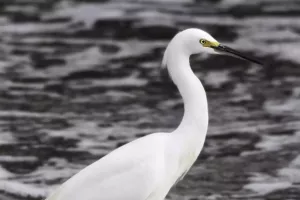It’s a well-known fact that most birds can fly. Some birds fly to catch prey, while others fly to escape predators. Regardless, the ability to fly is one of the defining features of most birds. However, there exists a subset of birds that lack this ability. There exist a handful of birds that can’t fly at all, and live their entire lives rooted to this ground.
1. Penguin
No list of flightless birds would be complete without the penguin. All 18 species of penguin are unable to fly, and are in fact better built for swimming and diving, which they spend the majority of their time doing. Their short legs and stocky build give them a distinctive waddling walk. While people tend to associate penguins with Antarctica, most species live in higher latitudes. A few even live in temperate climates, and the Galapagos penguin actually lives at the Equator. These birds are also remarkably romantic—penguins are largely monogamous and seek out the same mates each season, even among the hundreds or even thousands of birds that might live in their colony.
2. Ostrich
The largest living bird, the ostrich can grow to be bigger than even the largest of men, coming in at up to 9 feet tall (around 3 meters) and 300 pounds (136 kilograms). They can run up to 45 mph (75 kph), so there's not much reason to fly when you've got legs like that. Not to mention getting up in the air would be really difficult with all that weight. Lederer explains that ostriches often use their wings for balance and put them on display to attract a mate.
3. Kakapo
Also known as the owl parrot due to its owl-like features, the kakapo is a large species of flightless parrot. Endemic to New Zealand, kakapos rank as the largest parrots in the world. They range from 23 to 25 inches long and weigh between 2 and 9 pounds. Although they are birds that can’t fly, kakapos excel at climbing trees. On occasion, they will also use their wings to glide short distances after jumping from high elevations. Their plumage appears greenish-yellow, and they sport a large beak and feet. Kakapos are nocturnal and live on a diet of grasses, seeds, gruits, and tree sap. Due to hunting, deforestation, and predation by invasive mammals, kakapos are among the rarest animals on Earth. Currently, only around 200 remain in the wild, all of which live in isolated, predator-free island sanctuaries.
4. Steamer duck
Three out of four species of steamer duck are flightless, but four out of four species should not be messed with. Even within the flighted species, some males are too heavy to actually achieve liftoff. These South American ducks earned their name by running across water and thrashing their wings like the wheels on a steamboat. They use them for other forms of thrashing, too. Famously aggressive, steamer ducks are known to engage in epic, bloody battles with each other over territory disputes. They have even been known to kill waterbirds several times their size.
5. Kiwi
Despite being shy and nocturnal, these birds have managed to become pretty iconic. Kiwis are the national bird of New Zealand and, of course, the namesake for a uniquely brown and green fuzzy little fruit. They're also quite unique. Kiwi's don't nest, rather they burrow into the ground. Whisker-like feathers surround their long beaks that even have nostrils at the end to help them navigate in the dark. They don't have a tail, and while it appears they don't have wings, they're actually just so small — only 1 inch (3 centimeters) long — that they're hidden under all their feathers and are no help for flying.


